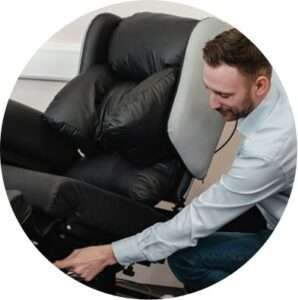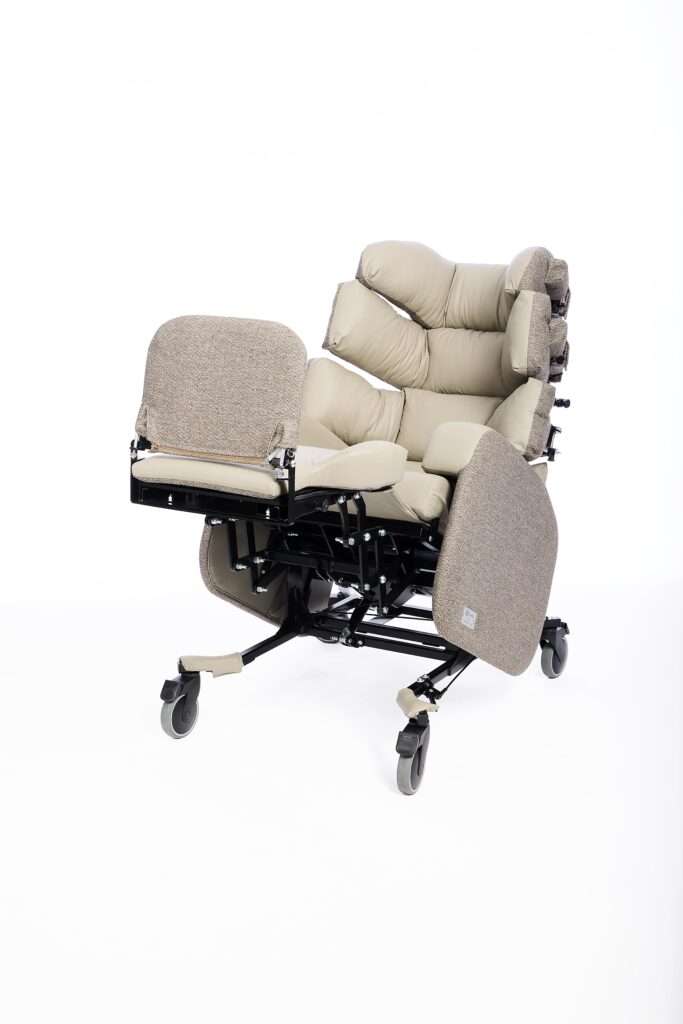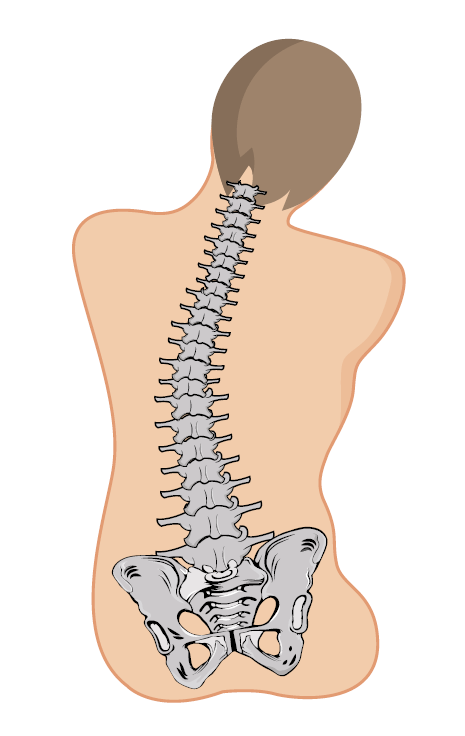Sciatica is a condition characterised by pain radiating along the sciatic nerve due to compression or irritation. Proper seating can alleviate pressure on the lower back and promote better posture, thereby reducing sciatic pain. This guide explores the top specialist chair options to help you find the best solution for sciatica.
Jump straight to…
What is Sciatica?
The sciatic nerve is the longest nerve in the body, running from the bottom of the back down to the feet. If it is compressed, for example due to a herniated disc, spinal stenosis, or muscle inflammation, it can cause a burning or shooting pain.
There are a range of treatment options for sciatica, from physical therapy and pain relief medication to steroid injections.
A large part of living with sciatica involves managing the pain and discomfort while staying as active as possible, and finding a balance between rest and movement. Seating plays a large part of this process, and there are certain seating features that can help with this condition.

Specialist Care Chairs for Sciatica Relief
The right chair can help reduce strain on the lumbar spine and pelvis, improve posture, and encourages blood circulation, all of which can significantly reduce sciatic pain.
For individuals requiring advanced support, especially those with mobility challenges or chronic conditions, specialist care chairs offer tailored solutions.
Cocoon Backrest – Back Support for Sciatica
Best for: Users needing enhanced back support for pain relief and postural alignment.
Key Features:
High-sided wraparound design: The Cocoon backrest features a supportive, contoured structure that gently “hugs” the user, providing side support and helping to maintain spinal alignment.
Pressure-relieving: Made from high-density foam with pressure-relieving properties, the backrest reduces load on sensitive areas along the spine and promotes better circulation.
Lento-compatible: Designed to attach to our range of Lento care chairs and available in all sizes, the Cocoon backrest can upgrade existing seating for users requiring greater postural stability and comfort.
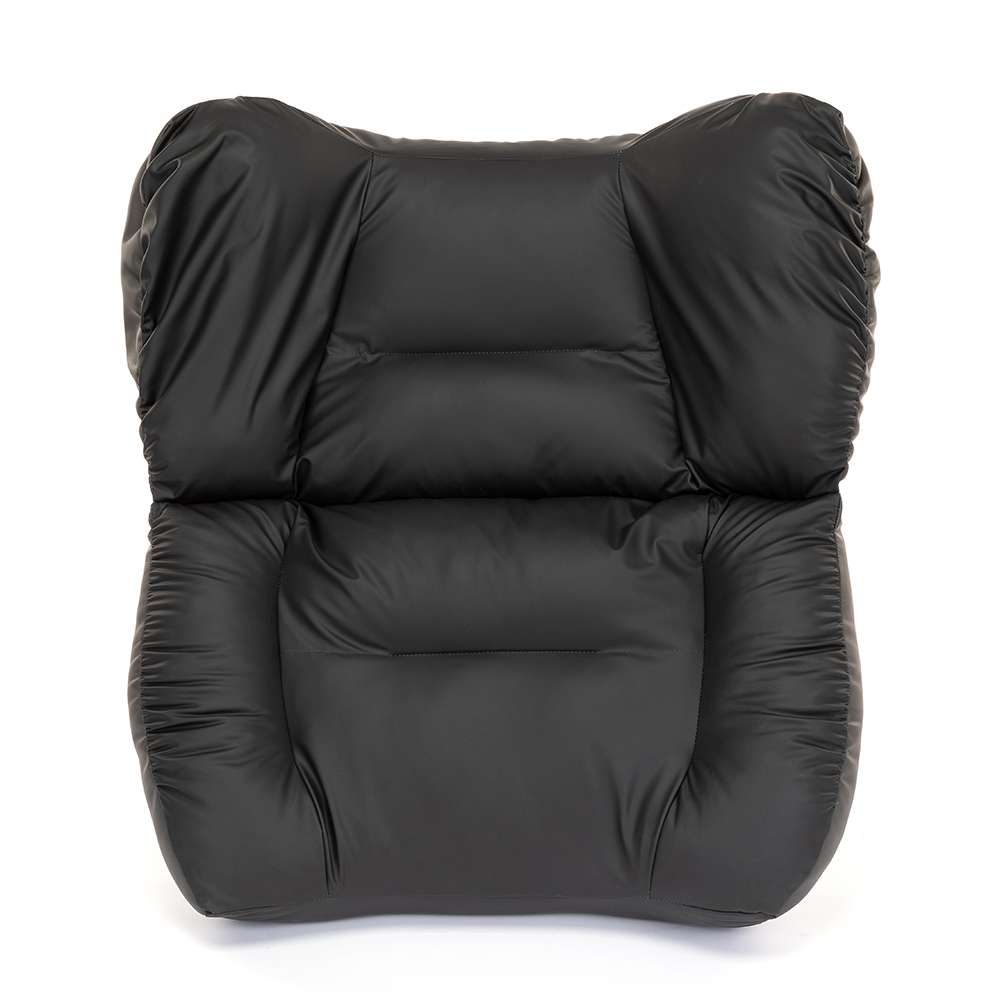
Lento cocoon backrest
How it Helps:
The Cocoon backrest supports the spine and pelvis in a neutral position, reducing the tendency to slouch or lean asymmetrically, both of which can aggravate sciatic pain. Its gentle contouring helps offload the lower back and prevents lateral movements that may trigger nerve irritation. This makes it an ideal solution for users who need continuous back support throughout the day.
Lento Mobile Riser Recliner Chair
Combining mobility with comfort, this chair features:
Electric rise and recline functions – gently transitions the user from seated to standing without spinal compression or straining the lower back.
Supportive memory foam cushioning – conforms to body shape, distributing weight and reducing peak pressure points.
Lockable castors for mobility – allows users to reposition easily without excessive twisting or bending.
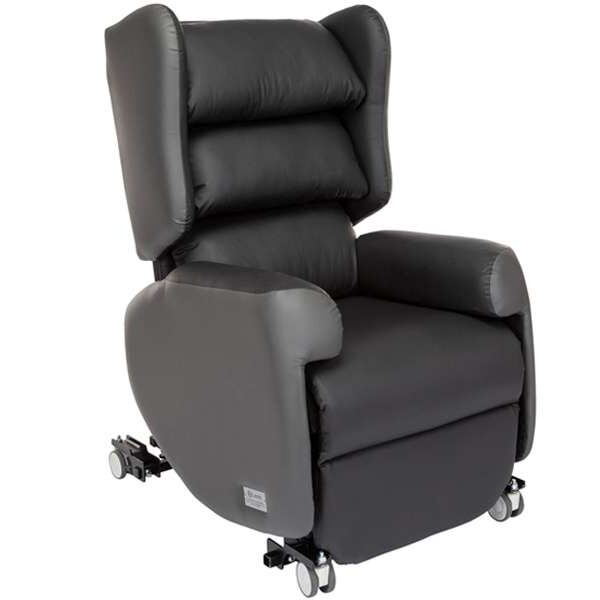
recliner chairs. riser recliner chairs. reclining chairs. recliner armchair. rise and recline chairs. recliner armchairs. riser recliner chair. electric recliner chair.
How it helps:
This chair is ideal for reducing the risk of flare-ups when transitioning between sitting and standing, which is a common pain trigger in sciatica.
Ergonomic Activity Chairs for Sciatica
For those spending extended periods at a desk or using different work surfaces around the home, the ergonomic VELA chairs can provide the necessary support.
VELA Tango 700E Chair
Best for: Users seeking adjustable support and mobility assistance
Key Features:
Electric Height Adjustment: The VELA Tango 700E offers stepless electric height adjustment, allowing users to raise or lower the seat smoothly. This feature aids in achieving optimal seating positions, reducing strain on the sciatic nerve during transitions between sitting and standing.
Ergonomic Seat and Backrest Options: Users can choose between ‘Active’ and ‘Contour’ seat and backrest designs. The ‘Contour’ option provides enhanced lateral support, promoting proper spinal alignment and reducing pressure on the lower back.
Adjustable Components: The chair features adjustable seat depth, angle, rotation, and tilt, as well as adjustable backrest height and angle. These adjustments enable users to customise the chair to their body dimensions, ensuring even weight distribution and minimising pressure points that can aggravate sciatica.
Mobility and Stability: Equipped with large, easy-rolling wheels and a central brake system, the chair allows users to ‘walk’ the chair while seated and secure it in place when needed. This mobility reduces the need for twisting movements that can exacerbate sciatic pain.
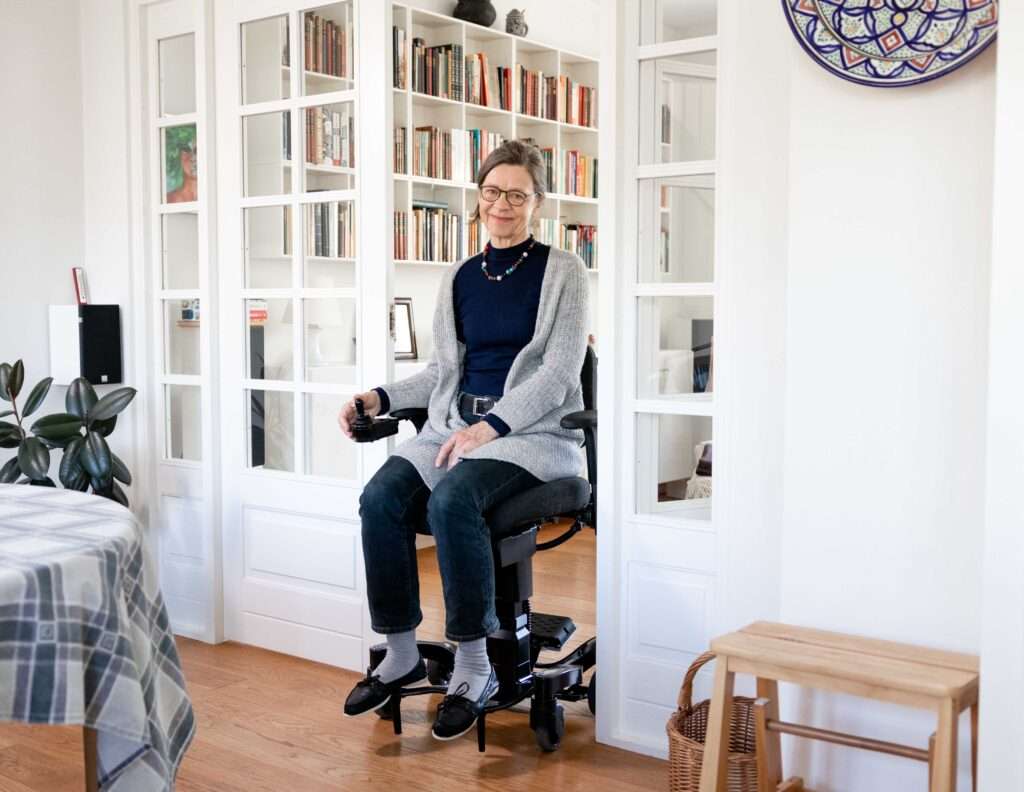
How it Helps:
The VELA Tango 700E’s combination of adjustable features and mobility support assists users in maintaining proper posture and reducing strain on the sciatic nerve. The chair’s design facilitates smooth transitions and stable seating, which are essential for managing sciatica symptoms effectively.
By integrating the VELA Tango 700E into daily routines, individuals with sciatica can experience enhanced comfort and mobility, contributing to improved quality of life.
Tips for Choosing the Right Chair for Sciatica
Adjustability
Look for adjustable seat height, depth, armrests, and lumbar supports. Customisation ensures that the chair fits your body and encourages healthy posture.
Lumbar and Pelvic Support
Proper lumbar support maintains the natural S-curve of the spine and reduces pressure on the sciatic nerve. Posture support that includes the sacrum can significantly improve comfort.
Tilt and Recline Functions
Chairs with tilt-in-space or recline functions can offload the spine and allow users to change positions easily, essential for sciatica relief.
Seat Depth and Cushioning
Adequate seat depth avoids pressure behind the knees and supports the thighs fully. High-quality foam or gel cushions can help redistribute weight and reduce pressure points.
Mobility and Rise Assistance
For those with reduced mobility, chairs with rise assistance can ease transitions and reduce strain on the lower back during standing and sitting.
Material and Breathability
Breathable materials prevent heat build-up, which can lead to muscle fatigue. Supportive fabrics also help maintain posture without excessive softness that leads to slouching.
Final Thoughts
Selecting the right chair is a crucial step in managing sciatica symptoms. Whether you’re working at a desk, recovering from an injury, or caring for someone with complex mobility needs, there are seating solutions designed to meet your needs. The key is to prioritise spinal alignment, pressure distribution, and ease of movement.
For personalised recommendations, consult with a seating specialist like ourselves or occupational therapist. They can assess your posture, pain patterns, and daily routines to recommend the ideal chair and accessories for your unique needs.
Get Expert Advice



